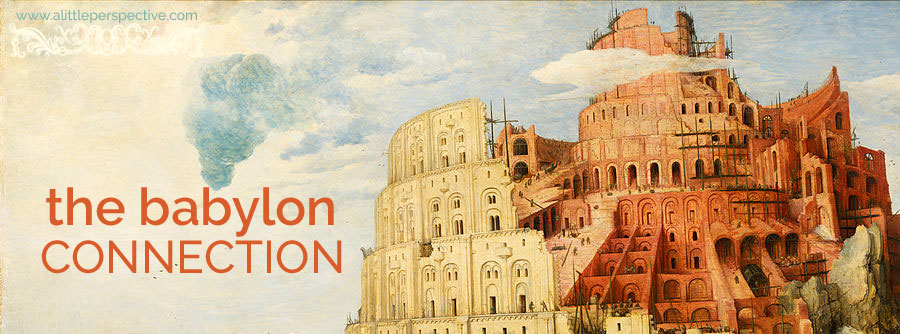the babylon connection
the babylon connection, part two
the babylon connection, part three
the babylon connection, part four
the babylon connection, part five
the babylon connection, part six
Concerning the second god of the Chaldean trinity, Rawlinson writes:
“Bel [the Phoenician Baal] … is the second god of the first triad. … His name, which seems to mean merely, “lord,” is usually followed by a qualitative adjunct, possessing great interest. [This god’s name is usually found as Bil-Nipru in the cuneiform.] It is proposed to read this term as Nipru … a word which cannot fail to recall the Scriptural Nimrod, who is in the Septuagint Nebroth. The term nipru seems to be formed from the root napar, which is in Syriac to pursue, to make to flee, and which has in Assyrian nearly the same meaning. Thus Bil-Nipru would be aptly translated as the Hunter Lord, or the god presiding over the chase, while, at the same time, it might combine the meaning of the Conquering Lord, or the Great Conqueror.
“On these grounds it is reasonable to conclude that we have, in this instance, an admixture of hero worship in the Chaldean religion. Bil-Nipru is probably the Biblical Nimrod, the original founder of the monarchy, the mighty hunter and conqueror. He is [called], “the supreme,” “the father of the gods,” “the procreator,” “the lord, par excellence,” “the king of all the spirits,” “the lord of the world,” and again, “the lord of all the countries.”
“… At the same time he is a god almost universally acknowledged in the invocations of the Babylonian and Assyrian kings, in which he has a most conspicuous place. In Assyria he seems to be inferior only to Asshur; in Chaldea to Ra and Ana. Of Beltis, the wife of Bel-Nimrod, a full account will be given presently. Nin or Ninip — the Assyrian Hercules — was universally regarded as their son; and he is frequently joined with Bel-Nimrod in the invocations. Another famous deity, the moon god [Ur] is also declared to be Bel-Nimrod’s son in some inscriptions. Indeed, as “the father of the gods,” Bel-Nimrod might evidently claim an almost infinite paternity.
“The worship of Bel-Nimrod in Chaldea extends through the whole time of the monarchy.”
– George Rawlinson, The Five Great Monarchies of the Ancient Eastern World, vol. 1, pp. 117-9 (emphasis added).
Please note that the deified Nimrod is called, in the inscriptions, by the same title as An, who is Satan deified: “the father of the gods.” He who is the father and the procreator is he who is the originator of what progeny follows. It is interesting that, besides, Ra (or Elohim) and An, all the other gods in the Chaldean pantheon are universally acknowledged as belonging to Nimrod: Beltis, his wife, is merely Ishtar, the so- called queen of heaven, and the most famous mood god Ur, his son, and all the other gods and goddesses, his progeny.
This is evidence enough that Nimrod invented Babylonian polytheism, under the influence, most certainly, of Satan. That An is the most ancient of the Babylonian gods, excepting Il or Ra, who is Elohim, or God the Creator, shows us that the worship of Satan under the guise of An most probably prompted Chaldean polytheism, or Babylonian paganism.
But how do we know that all paganism worldwide has its root in Babylonian paganism? To be continued …
the babylon connection, part eight
the babylon connection, part nine
the babylon connection, part ten
the babylon connection, part eleven
the babylon connection, part twelve
the babylon connection, part thirteen
the babylon connection, part fourteen
the babylon connection, part fifteen
the babylon connection, part sixteen
